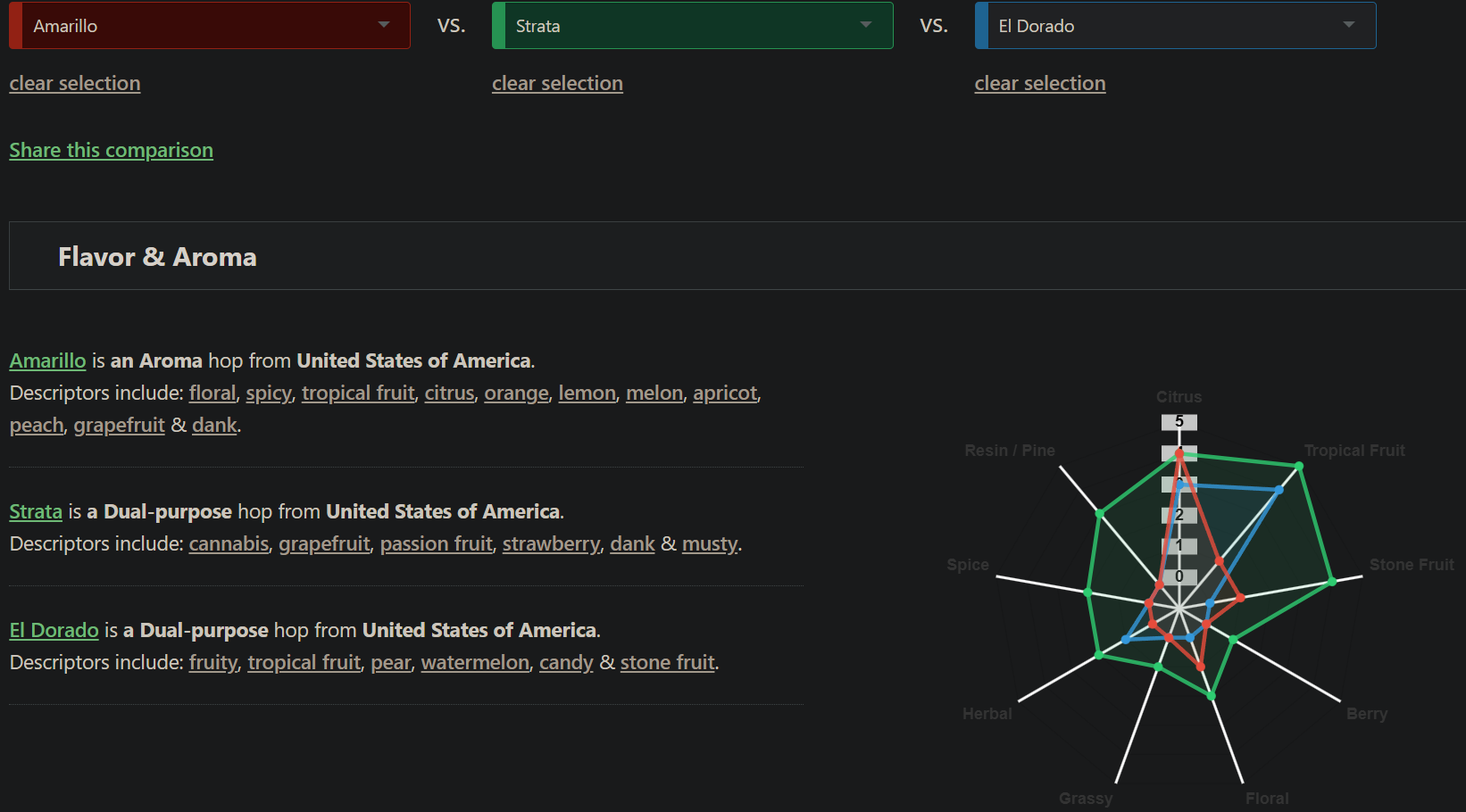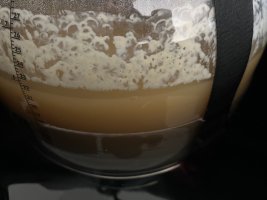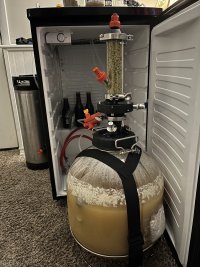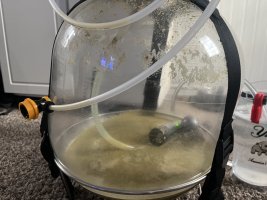Thanks for the response.For grain bill, I'd go 70% 2-row, 15% white wheat, 10% oats and 5% CaraFoam. Mashed at or near 70°C. Shoot for an FG around 1.018 and around 70% attenuation, so a roughly 1.068 OG.
For hops, from what you've noted there and going for something "not the same" I would probably go with Strata, Mosaic and Vic Secret in 3:2:2 ratio. Token 15 IBU of Centennial or Columbus at the start of the boil, then nothing else until a 5oz minimum whirlpool at 75°C. DH maybe 6-7oz minimum and 10 if you really feel like it.
Ferment with Verdant on the warmer end of the spectrum. You honestly won't get any real benefit from liquid yeast, honestly I think they're 3x the cost and 10x the effort for an overall less consistent outcome.
Why no Golden Promise? I do prefer a slighly sweeter over dry beer, wouldn't GP support that?
While I am going for something 'not the same', I still want it to have some juicy characteristics, and not just some random mix of hops. Ideally orange, peach, grapefruit, a bit on the sweet side, no bitterness, or just enough to make it taste like beer. I also have a # of lactose I can add to the recipe.
Regarding yeast, that is good to hear as I prefer not to get involved with liquid. I'd much rather spend $5 on a pack of dry for each batch.























































![Craft A Brew - Safale S-04 Dry Yeast - Fermentis - English Ale Dry Yeast - For English and American Ales and Hard Apple Ciders - Ingredients for Home Brewing - Beer Making Supplies - [1 Pack]](https://m.media-amazon.com/images/I/41fVGNh6JfL._SL500_.jpg)








